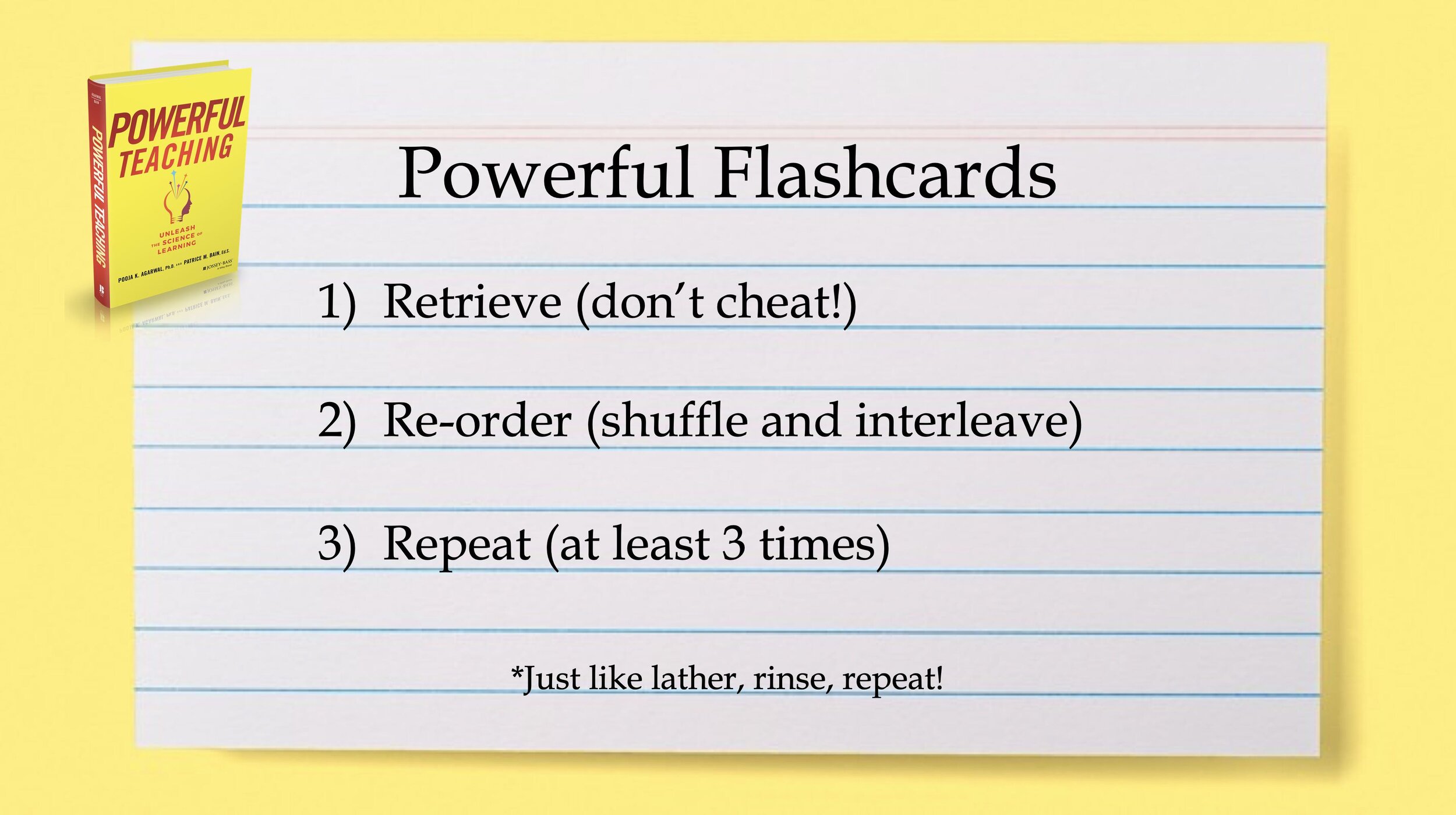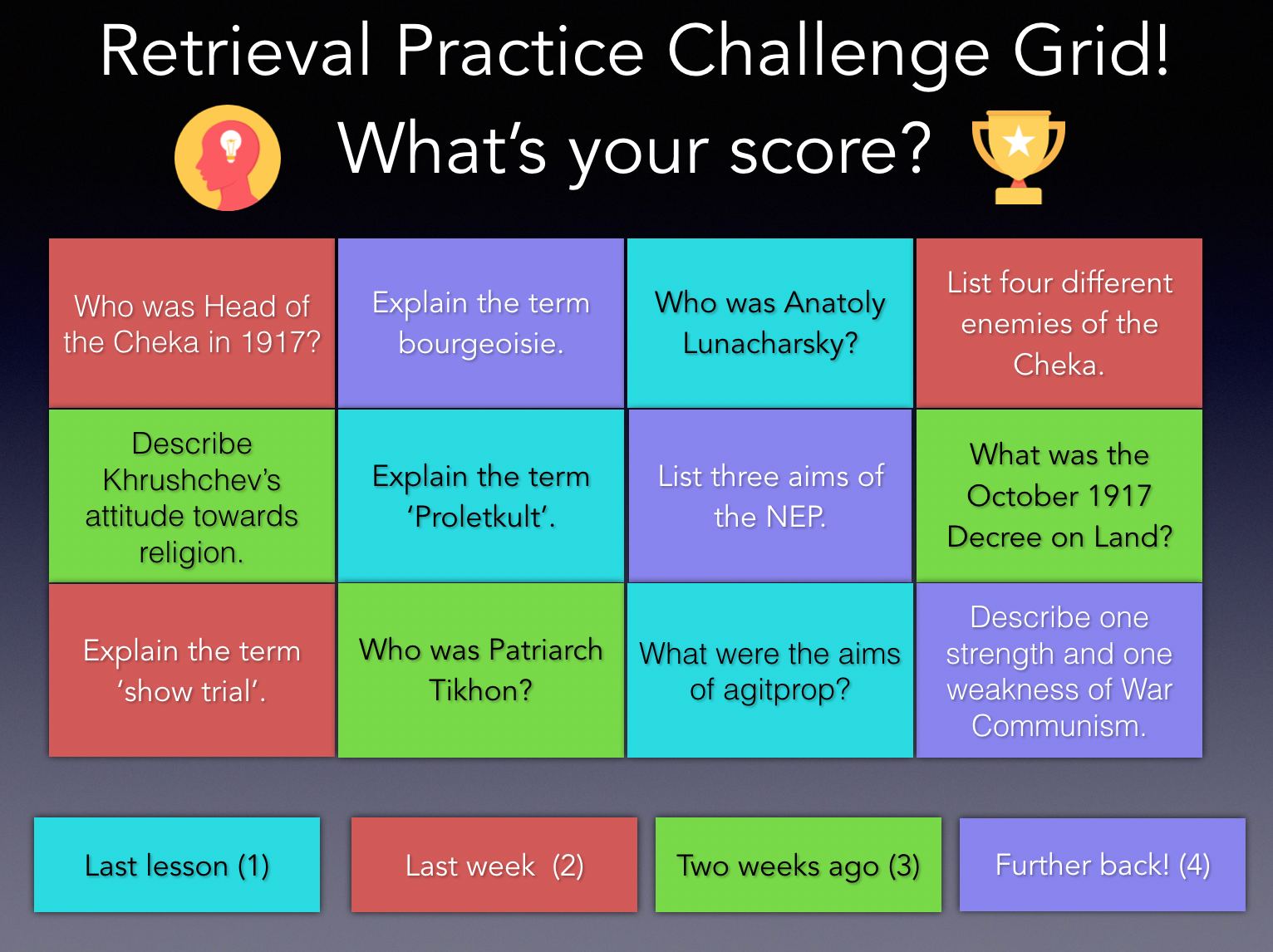Make flashcards more powerful with these 3 tips
/By Pooja K. Agarwal, Ph.D.
Flashcards are a popular study strategy. But using flashcards doesn't guarantee they're using retrieval practice. In fact, students could be wasting their time.
This week, we share three research-based tips to make flashcards more powerful. Help students study smarter, not harder. (You can also share this 20-minute podcast episode from NPR where we discuss these three tips!)
Make Flashcards More Powerful
We'd wager that millions of students use flashcards every day. In survey research of student study strategies, more than 20% of K-12 students and more than 50% of college students report using flashcards. But do students use flashcards effectively? Not necessarily.
Many students use flashcards. That’s great! But here’s a surprise: it’s not always retrieval practice. Researchers at Kent State University have demonstrated that students actually “cheat” themselves by flipping cards over too early and dropping cards out of their deck too quickly.
In laboratory experiments by Jeff Karpicke, when students used a flashcard program and made their own decisions (e.g., they could decide when to drop cards from the deck), there was no benefit on exam performance. Similarly, in a classroom study led by Katherine Rawson, students did not remember as much when they could make their own decisions, compared to a flashcard program preset by researchers.
Here are three tips from Powerful Teaching to make flashcards more powerful (use the mnemonic "lather, rinse, repeat" to help you remember).
1) Retrieve: Students should make sure they are retrieving the answer. Write down the answer or say it out loud before flipping the card over. This holds students accountable and ensures they retrieve, rather than falling for the illusion of confidence – thinking “of course I know it” and flipping the card over prematurely. As demonstrated in a recent laboratory study, students’ learning after two days was greater after overt retrieval practice compared to covert retrieval practice.
2) Re-order: Students should shuffle their deck each time they go through it to challenge themselves with spacing and interleaving, instead of going through their flashcard deck in the same order again and again.
3) Repeat: Students should keep cards in their deck until they’ve correctly retrieved it three times. Just because a student has retrieved an item once doesn’t mean they “get it.” We know from research that students have a tendency to remove their cards too early, so by ensuring students keep a card in their deck three times, students are accountable for making sure they really know it, rather than simply thinking they do. This also helps add space between cards in the deck (what scientists call “lag”), further increasing learning.
Many students are turning to tech tools for flashcards, like Kahoot, Quizlet, and Anki. Check out our rundown of flashcard apps and which ones are best for retrieval, spacing, interleaving, and more. Recent research suggests that students may benefit from “conceptual flashcards” that engage students in retrieval practice of broader ideas compared to “detailed flashcards” of definitions that are more typical of students’ use of flashcards.
Lastly, in case you missed it, there’s a popular tweet about flashcards going around right now. This is quite impressive for a high school student! That being said, having those flashcards displayed on a board – rather than being retrieved overtly and shuffled as a deck – makes us wonder whether the student is studying harder or smarter. What do you think? Comment below!
I know I'm biased but I have never met anyone with the work ethic my daughter has. She embraced the whole knowledge retrieval/flashcard approach throughout her GCSEs; she's now in Year 13 and these are her A Level Biology flashcards. This strategy is tried and tested! pic.twitter.com/NSBMaxJ18p
— Andy Byers (@Framheadteacher) November 17, 2019





















